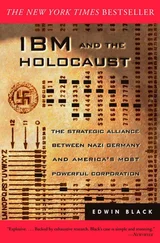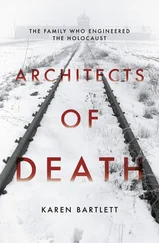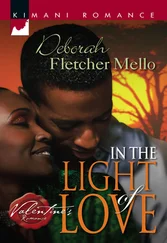Ibid., p. 647.
For a discussion of British propaganda, see C. Hartley Grattan, Why We Fought (1929), and Walter Millis, Road to War (1935), cited in John E. Wiltz, From Isolationism to War, 1931–1941 (New York, 1968), p. 8.
Wiltz, From Isolationism to War, p. 7.
Charles A. Beard, President Roosevelt and the Coming of the War (New Haven, 1948), p. 5.
Barnes, Genesis, p. 648.
Fay, Origins of the World War, p. 558.
Wiltz, From Isolationism to War, p. 17.
Wayne S. Cole, Roosevelt and the Isolationists, 1932–1945 (Lincoln, Nebr., 1983), p. 6.
For background on the isolationists-revisionists and a sympathetic portrayal of their efforts, see Justus D. Doenecke, Not to the Swift: The Old Isolationists in the Cold War Era (London, 1982); see also Wayne S. Cole, Charles A. Lindbergh and the Battle Against American Intervention in World War II (New York, 1974), pp. 379–81.
Tom Connally, My Name Is Tom Connally (New York, 1954), pp. 211–14, cited in Cole, Roosevelt and the Isolationists, p. 161.
Cordell Hull, Memoirs of Cordell Hull, vol. 1 (New York, 1948), p. 404.
Cole, Roosevelt and the Isolationists, p. 161; Dexter Perkins, The New Age of Franklin Roosevelt, cited in Wiltz, From Isolationism to War, p. 50.
Wiltz, From Isolationism to War, p. 7.
Johnson to Hiram W. Johnson, Jr., Feb. 11, 19, 1939, Johnson to Frank P. Doherty, Feb. 11, 1939; Johnson Papers, cited in Cole, Roosevelt and the Isolationists, pp. 308, 607.
Edward S. Shapiro, “Antisemitism Mississippi Style,” Antisemitism in American History, ed. David Gerber (Urbana/Chicago, 1986), pp. 129–47. Rankin also opposed the repeal of the Chinese Exclusion Act because “Japs” would flood America in the postwar period (Doenecke, Not to the Swift, p. 21).
Congressional Record, 77th Congress, 1st sess., 1941, 87:6565; Cole, pp. 475–76.
Cole, Roosevelt and the Isolationists, p. 465. On antisemitism in America First see James C. Schneider, Should America Go to War? The Debate over Foreign Policy in Chicago, 1939–1941 (Chapel Hill, N.C., 1989), p. 210.
Charles Beard, “We’re Blundering Into War,” American Mercury, (Apr. 1939), pp. 388–90.
The International Jew: The World’s Foremost Problem (Hawthorne, Calif., n.d.). For an analysis of antisemitic conspiracy theories in the United States see Seymour Martin Lipset and Earl Raab, The Politics of Unreason: Right-Wing Extremism in America, 1790–1977, 2d ed. (Chicago, 1978), chaps. 4, 5, and 6. For the impact of the belief in the Protocols see Norman Cohn, Warrant for Genocide (New York, 1966), pp. 156–64. For a compelling overview of the role of conspiracy theories in America see George Johnson, Architects of Fear: Conspiracy Theories and Paranoia in American Politics (Boston, 1983). For a discussion of Henry Ford see ibid., pp. 111–14. For information on contemporary uses of the Protocols see Patterns of Prejudice, Nov./Dec. 1977.
Lipset and Raab, Politics of Unreason, p. 135.
Johnson, Architects of Fear, pp. 78–80.
Henri Zukier, “The Conspiratorial Imperative: Medieval Jewry in Western Europe,” Changing Conceptions of Conspiracy, Carl F. Graumann and Serge Moscovici, eds. (New York, 1987), pp. 93–101.
Chicago Tribune, editorial, Nov. 9, 1945. John T. Flynn, The Roosevelt Myth (New York, 1948). Other books that made similar arguments included William Henry Chamberlin, America’s Second Crusade (Chicago, 1950), and Frederic R. Sanborn, Design for War (New York, 1951).
Beard, President Roosevelt, p. 577.
Time, June 16, 1947, p. 29, quoted in Doenecke, Not to the Swift, p. 101.
Charles C. Tansill, Back Door to War: The Roosevelt Foreign Policy, 1933–1941 (Chicago, 1952), p. 9.
Tansill, Back Door to War, p. 510.
For Tansill’s views on Hitler see Charles C. Tansill to Harry Elmer Barnes, November 10, 1950, Barnes Papers, Univ. of Wyoming. For background on Tansill’s conservative and segregationist views see Doenecke, Not to the Swift, pp. 101–2, 112.
Tansill, Back Door to War, pp. 554–55.
Austin App, A Straight Look at the Third Reich: Hitler and National Socialism, How Right? How Wrong? (Tacoma Park, Md., 1974), p. 40.
William Henry Chamberlin, “Shifting American Alignments,” Human Events (May 22, 1946).
Freda Utley, The High Cost of Vengeance (Chicago, 1949), p. 14.
George Morgenstern, Pearl Harbor: The Story of the Secret War (New York, 1947), pp. 4, 7, 283, cited in Doenecke, Not to the Swift, p. 97.
William Neumann to H. E. Barnes, Jan. 30, 1946, Barnes Papers, cited in Doenecke, Not to the Swift, p. 141.
Frederick Libby, Peace Action, vol. 9 (July 1945), pp. 3–4.
Leonard Dinnerstein, America and the Survivors of the Holocaust (New York, 1982), pp. 162–83.
Doenecke, Not to the Swift, p. 133.
Ibid., p. 145.
In a far milder and more rational defense of the German people, Philip La Follette, former governor of Wisconsin, described the German people as the first victims of Nazi brutalities.
Congressional Record, Mar. 29, 1946, p. 2801, and Apr. 18, 1946, p. 3962.
Extreme concern about the conditions of the German population did not always ipso facto indicate a lack of concern about what Jews had experienced. Langer was one of the outspoken supporters in the Senate of the activist Jewish leader Peter Bergson, who called for a strong American rescue program for European Jewry. In 1943 on the floor of the Senate, Langer had publicly criticized the Bermuda Conference as a ploy sponsored by the British and American governments to give the illusion that plans for rescue were under serious consideration. He warned that “2,000,000 Jews in Europe have been killed off already and another 5,000,000 Jews are awaiting the same fate unless they are saved immediately. Every day, every hour, every minute that passes thousands of them are being exterminated.” Langer’s positions both during the war and after it are attributable in great measure to his opposition to the Democrats’ foreign policy (David Wyman, The Abandonment of the Jews: America and the Holocaust, 1941–1945 (New York, 1984), p. 143.
Читать дальше












